- Register
- Log in to Tune-In
- Wishlist (0)
-
Shopping cart
(0)
You have no items in your shopping cart.
Beatles News

Forget the Grammys. The biggest honor in the world of music is getting the stamp of approval from a Beatle. Sure, you can't necessarily stick that on your mantle, but a thumbs-up over the years from any combination of John, Paul, George, and/or Ringo often meant that your musical career was trending in the right direction. Their word was in fact so powerful that it carried a ton of weight even outside of the music biz.They were also ready to help out those they were fans of. According to Rolling Stone, after lending his talents to the Beatles' hit "Get Back," the band signed pianist Billy Preston to their label, Apple Records, and he released " That's the Way God Planned It," with George Harrison producing, Ginger Baker from Cream handling the drums, and Rolling Stones guitarist Keith Richards also appearing on the record.
Source: Matt Reigle/grunge.com
details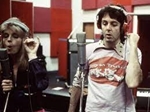
It was 48 years ago this week that Paul McCartney & Wings' "Band On The Run" hit Number One on the Billboard Hot 100, topping the charts for one week. The song marked McCartney's third post-Beatles chart-topping single, following 1971's "Uncle Albert/Admiral Halsey" and 1973's "My Love."
By that point, McCartney's chart-success was way ahead of his former-bandmates, with a total of eight solo U.S. Top Ten hits under his belt, with John Lennon only scoring two, George Harrison with three, and Ringo Starr coming closest with a total of five American Top Ten smashes.
Source: Music News/nightswithalicecooper.com
details
JOHN LENNON stirred the pot that was The Beatles in the 1960s when he first met Yoko Ono and married her. The band were not fans of the newcomer, and in one instance George Harrison insulted her "to her face". Lennon revealed he would never forgive or forget that anger he felt over the Fab Four's actions.
John Lennon married Yoko Ono in 1969, just a year after meeting her. The Beatles star had met her at an art gallery while he was still married to his first wife, Cynthia Lennon. But after breaking it off with her, Lennon and Ono were inseparable.
The pair went everywhere together, including to the Fab Four's recording sessions; a detail that would later become a point of contention for the likes of Paul McCartney. And when the band split in 1970, Ono was one of the main "reasons" the press pointed at as an explanation.
Source: Callum Crumlish/express.co.uk
details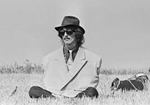
George Harrison never did anything he didn’t want to do, including making new music. Record companies and fans’ expectations turned George off most of the time. He couldn’t be bothered to give them what they wanted just because they demanded it. So, having his music out on the record store shelves wasn’t George’s highest priority.
“I am a bit out of touch with the other music,” he said. “Everybody else doesn’t notice, because if your past records still get played on the radio, people don’t notice that you’re not really there. But I just got sick of all that…”
Source: cheatsheet.com
details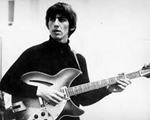
George Harrison revealed why he watched a live performance of some of Eddie Money’s songs. He liked one of Money’s songs a lot more than another. Michael Jackson had the same opinion of Money’s music that George did.
George Harrison‘s songs don’t sound much like Eddie Money’s songs. Despite this, George had a mix of praise and criticism for Money. George wasn’t a massive fan of some of his songs and Michael Jackson had the same opinion.According to the book George Harrison on George Harrison: Interviews and Encounters, George discussed Money in a 1979 interview. “A friend of mine told me he was called Eddie Mahoney and they took out the ‘h’ and called him Eddie Money,” George said. “It’s a good name, it’s a better name, ‘Eddie Money.'”
Source: cheatsheet.com
details
George Harrison said the “darkness” in his childhood began when he started attending grammar school. None of the unqualified teachers could tell him how to go out into the world. The former Beatle would only learn if he was teaching himself, which he eventually did.
“The worst thing was leaving the junior high school and going to the big grammar school,” George wrote. “That’s when the darkness began and I realised… that was where my frustrations seemed to start.
“The whole idea of it was so serious. You can’t smile and you are not allowed to do this or that. Be here, stand there, shut up, sit down, and always you need those exams, those eleven-plus exams, or scholarships or GCE. That’s when the darkness came in.
Source: cheatsheet.com
details
In all the nooks and crannies of Beatles Scholarship, the Fabs’ relationship to and time spent in India is one of the most interesting. In fact, it could be argued that no group did more to open Western ears, eyes, and minds to Indian music, culture, and spirituality than the Beatles did in the mid/late 1960s.
The connection is told in the fascinating 2021 documentary The Beatles and India (available on DVD & Blu-Ray June 21 from MVD Entertainment). It’s co-directed by Ajoy Bose (based on his book, Across the Universe—The Beatles in India) and Pete Compton.
Source: Bob Ruggiero/houstonpress.com
details
When Paul McCartney sat down to record his music-hall ditty “When I’m Sixty-Four,” he was barely 25. It was a lark. Who could imagine the Beatles — the epitome of youth — as doddering old fogeys?
These days, when the (still!) cute Beatle sings the song, he’s looking in the rear-view mirror. Waaay back in the rear view: Later this month he’ll turn 80, just a week and a half or so after wrapping up his two shows Tuesday and Wednesday at Fenway Park.
McCartney is not alone among the growing group of aging rock stars entering their ninth decades and still sincerely not wasting away. Ringo Starr, who was peace-and-loving around the Boston area with shows featuring his All Starr Band last week, turns 82 in July.
Source: Yvonne Abraham/bostonglobe.com
details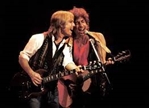
The Traveling Wilburys were a musical supergroup of George Harrison, Jeff Lynne, Bob Dylan, Roy Orbison, and Tom Petty. All were highly esteemed musicians, but Petty said they were particularly reverent of Dylan. While they treated him like they would anyone else, they looked up to him. Petty said that they worried that they might scare him into quitting the group.
Dylan invited Tom Petty and the Heartbreakers to join him on a tour of Australia in 1986. They’d worked together before, so it was an easy decision for Petty.
“We’d all been huge Dylan fans, and we were very intrigued by the idea of playing with Bob,” Petty said, per American Songwriter. “So off we went. And that went on for two years. We’d do part of it and then more would get added on, and then more would get added on. We really did the world with Bob Dylan.”
Source: cheatsheet.com
details
Saturday, June 25, 2022 marks marks the 13th Annual Global Beatles Day (GBD). Given the state of the world, the event, which began in 2009, takes on a greater meaning this year. The Beatles core message of peace and love is, yet again, a rallying point for a call to action says the event’s foundeFaith Cohen, Indianapolis-based GBD founder, has in the past suggested honoring the contributions of the Beatles in many ways including playing their music exclusively on that day to sharing historic and personal Beatles photos and memories among the band’s worldwide fan community. This year, in addition to celebrating the special day, she has a new call to action for June 25th, the date that commemorates the historic worldwide television broadcast debut of ‘All You Need Is Love’ during 1967’s Summer of Love. As it happens this year June 25th coincides with a scheduled Paul McCartney performance at this year’s Glastonbury Festival and a concert appearance by Ringo Starr and his All Starr Band in Hollywood, FL.
Source: Buddy Iahn/themusicuniverse.com
details
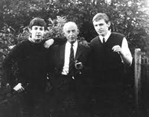
On June 6, 1962, 60 years ago this week, the very nervous, almost-Fab foursome of John, Paul, George and Pete entered EMI’s studios on Abbey Road in the St. John’s neighborhood of London for their first recording session under the recording contract that the already legendary producer George Martin had offered their rather green manager, Brian Epstein, on the label he was then managing, Parlophone, when the pair had met the previous February. But the group — who were tearing up the pub and club circuit in the north of England after a long, grueling stint in Hamburg, Germany, where they’d played eight hours a day, six days a week, honing their craft and becoming one of the tightest and rawest bands in the country — nearly didn’t make the cut during that first session.
Source: Jeff Slate @jeffslate/insidehook.com
details
It was a cultural lightning strike without precedent … a band from working-class Liverpool that conquered the world with its infectious melodies, intricate harmonies, and boundless creativity. In a recording career spanning less than a decade, notes "Sunday Morning" host Jane Pauley, The Beatles propelled the humble pop song into the realm of high art, to become the most inventive and influential musical act of their era.
Their most innovative songs were, as one biographer put it, "stone bowls in an era of cupped hands."
Source: cbsnews.com
details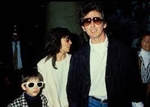
George Harrison struck gold when his record company, Dark Horse Records, hired his future wife, Olivia Arias. From the moment they met, Olivia made sure the path in front of George was clear. Without her, he’d have no voice or body. She helped him in the songwriting process as his amanuensis. When a deranged fan broke into their home, she saved him.
Olivia was the only person George could have been with who could keep him in line. As their friend Tom Petty said, she had a pretty tough job being Mrs. Harrison.
In a special edition of Rolling Stone, “Remembering George,” Tom Petty looked back at his relationship with George. Speaking about writing “Cheer Down” together, Petty revealed that the song’s origin came from something George’s wife, Olivia, used to say to him when he got overexcited.
Source: cheatsheet.com
details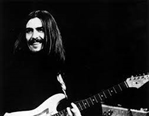
Turns out, the “quiet Beatle” wasn’t so quiet after all. Especially in the decade after the Fabs’ heyday. The new book, George Harrison In the 70s, by Eoghan Lyng examines how Harrison navigated a turbulent decade, both personally and professionally.
Using each of his 70s albums as chapters, we trace Harrison’s emergence from the Beatles into an artist completely his own. Beginning with the masterpiece, All Things Must Pass, we get a sense of the enormous backlog of material that had been waiting to be unleashed on “the material world.” Having watched the Peter Jackson documentary, Get Back several times, this writer was stunned at the George songs that the Beatles passed on that later showed up on George’s debut. It was a true, “What were you guys THINKING (or not)?” moment. Harrison was neatly vindicated.
Source: About CultureSonar/goodmenproject.com
details
First things first. The photograph emblazoned on The Beatles‘ Abbey Road album cover was indeed taken on a street named Abbey Road. It was that picture that dressed up The Beatles’ 11th studio album (1969), which was designed in the Side 1, Side 2 style with a total of 11 tracks. Abbey Road, along with its album cover, would eventually become known as one of the greatest records of all time. But what of its culturally iconic photograph? What is the story behind the immortalized snapshot of the four Beatles?
Source: americansongwriter.com
details